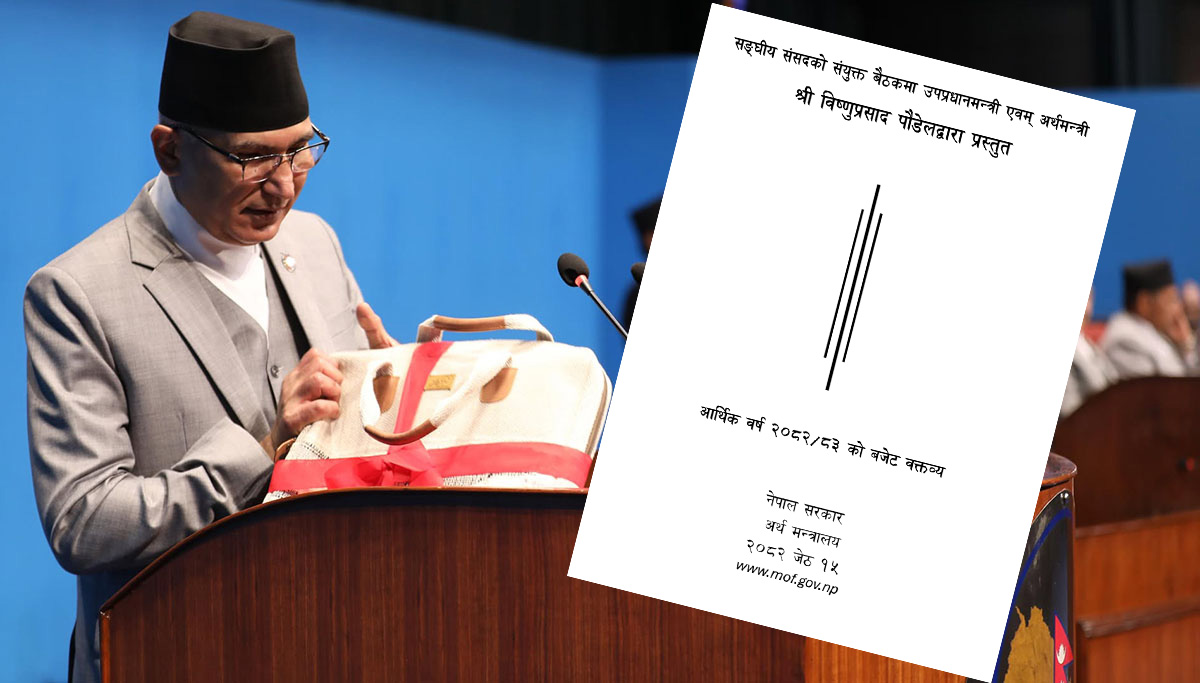
Major Economic Challenges and Commitments in Nepal FY 2082/83
Due to the inability to establish timely legal frameworks and the lack of effective investigation and prosecution, Nepal has been placed under intensive monitoring for money laundering.
Issues in Agriculture and Productivity
-
Traditional farming systems have not improved as expected, keeping agricultural productivity low.
-
Youth engagement in agriculture remains minimal.
-
Innovation and technology use is insufficient.
-
Low productivity and high production costs have limited the contribution of the productive sector to national income.
Industry and Infrastructure Gaps
-
Declining demand has kept industries from operating at full capacity.
-
Investment in physical infrastructure has not translated into desired production growth.
-
The negative impact of climate change is increasing across agriculture, drinking water, and irrigation.
-
Weak digital infrastructure is slowing digital economy growth.
Labor Market and Employment
-
The mismatch between labor market demands and produced human resources persists.
-
Skilled labor needed for industrial and construction sectors is being imported.
-
A concerning number of skilled and semi-skilled workers continue to migrate abroad due to lack of domestic employment opportunities.
-
The poverty rate remains high.
Investment and Financial Constraints
-
The private sector's contribution to gross fixed capital formation remains lower than expected.
-
Modern financial instruments for investment risk management have not been effectively deployed.
-
Financial resources for the productive sector remain insufficient.
-
Strengthening regulatory institutions and reducing financial risk remains a challenge.
Credit Rating and Capital Attraction
-
Although Nepal's first sovereign credit rating produced relatively favorable results, the benefits are yet to be fully realized.
-
Despite legal and policy reforms, foreign investment and technology have not entered as expected.
Trade Deficit and External Sector Pressure
-
High trade deficit continues due to limited export expansion and diversification.
-
Weak domestic production capacity has led to high imports of consumer goods.
-
Opportunities for exporting services in tourism and IT are underutilized.
-
Balancing the external sector, which heavily relies on remittance, remains a challenge.
Revenue, Spending, and Implementation Issues
-
Revenue savings for development are shrinking.
-
Income sources are narrowing.
-
There is a challenge in restructuring the tax system to be broader, sustainable, and focused on domestic production.
-
Efficient allocation has not been ensured.
-
High recurrent spending makes it difficult to fund capital expenditure through traditional sources.
-
Weak project implementation causes delays and cost overruns.
-
Without proper resource management, development programs risk remaining limited to announcements.
-
Rising public debt poses sustainability concerns.
Public Administration and Governance
-
Professionalization of public administration remains unachieved, resulting in service delivery issues.
-
Delays in public services, lack of accountability, outdated decision-making processes, and poor inter-agency coordination challenge good governance.
Government Commitments to Address Economic Challenges
-
A top government priority is to remove Nepal from the money laundering monitoring list before the stipulated timeframe, thereby enhancing the country's economic credibility and reputation. Building on the encouraging results from the first sovereign credit rating, further reforms will be launched to secure a higher rating and better external capital mobilization.
Promoting the Private Sector and Investment Climate
-
Legal reforms through ordinances have encouraged the private sector.
-
Public investments will focus on productive sectors to attract private capital and technology for qualitative economic growth.
-
Additional policy, legal, and procedural reforms will establish the private sector as a key driver of economic prosperity.
Implementing Reform Recommendations
-
The recommendations from the High-Level Economic Reform Advisory Commission (2081) will be gradually implemented.
Resource Diversification and Revenue Strengthening
-
To meet Sustainable Development Goals by 2030 and offset potential investment shortfalls after Nepal’s upgrade to a developing nation by 2026, resource diversification will be pursued.
-
Revenue administration will be professionalized.
-
Revenue systems will be strengthened.
-
Public debt will be invested in high-yield sectors.
-
Unproductive projects will be cut, and priority will be given to impactful projects.
-
Alternative and feasible financing tools will be utilized to offset development finance shortfalls.
Trade and Employment Measures
-
Export of competitive goods and services will be promoted.
-
Domestic production of consumer goods will be encouraged to balance trade.
-
Skilled Nepali workers abroad will be attracted back for entrepreneurship and self-employment.
-
Innovation and entrepreneurship will be promoted to generate employment opportunities targeted at young people.
Government’s Broader Commitment
The government is determined to build on recent achievements, deliver positive change in citizens' lives, overcome public despair, and foster renewed hope. This budget has been formulated to stimulate the economy and create new economic opportunities.
It is based on:
-
Constitutional rights
-
Periodic plans
-
National policy commitments
-
Government programs approved by Parliament
-
Parliamentary input on the Appropriation Bill
-
Subject committees
-
Private sector feedback
-
Expert and public suggestions



